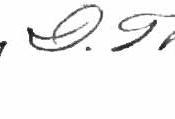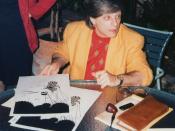Conformity. Noah Webster defines it as "action in accordance with prevailing social standards, attitudes, practices, etc.". When a man conforms he displays obedience towards the regulations of the society into which he has been planted. Harlan Ellison writes of conformity in his epic entitled "'Repent Harlequin!' Said the Ticktockman". And it is through his piece that he paints the idea of non-conformism. Ellison implements in media res organization, crafts a programmed society, interpolates monotonous diction, and alludes to Thoreau's "Civil Disobedience" in respect to serving society; all in an effort to stir in readers the true danger that goes hand in hand with depravity in leadership, while also magnifying the importance of a single voice in such a setting.
"Now begin in the middle, and later learn the beginning: the end will take care of itself", writes Ellison as he prepares to begin his epic. By introducing the piece in this manner, he offers a signal to the reader of the non-conformity that he will model throughout.
The middle of the story comes first, as Ellison promised- as the futuristic setting is introduced. Through describing the emotionless abode, he creates in the reader a disliking of the mechanical nature of the place. A fear of sorts is stirred in the reader as the Ticktockman comes into play, his coldness ever so present from the start. He then moves to the metropolis and its clockwork nature. We envision the orderly denizens, moving throughout their pre-programmed lives and lacking diversity altogether. It is eerie, in a sense, to ponder this society in its robotic form; and this creates unfamiliarity within the reader. By creating this uncomfortable feeling within the audience, Ellison sets up the welcoming disruption that comes from the Harlequin. As he commits the mischievous act, the reader finds...



Nice
This was written good and was very helpful.
3 out of 5 people found this comment useful.